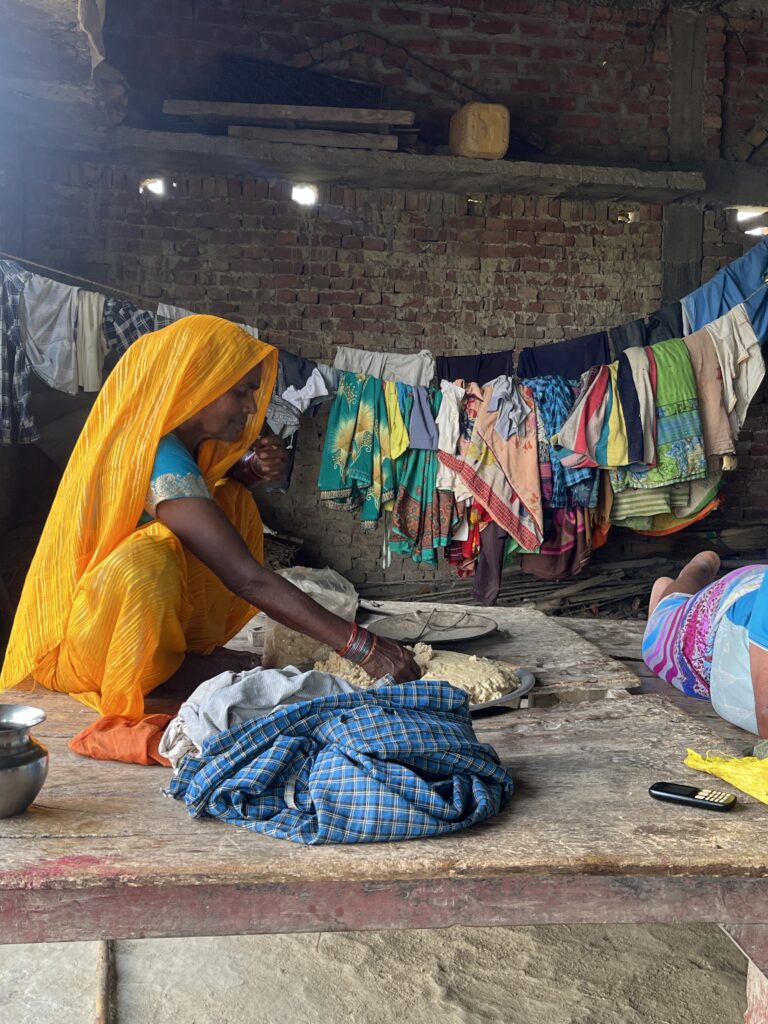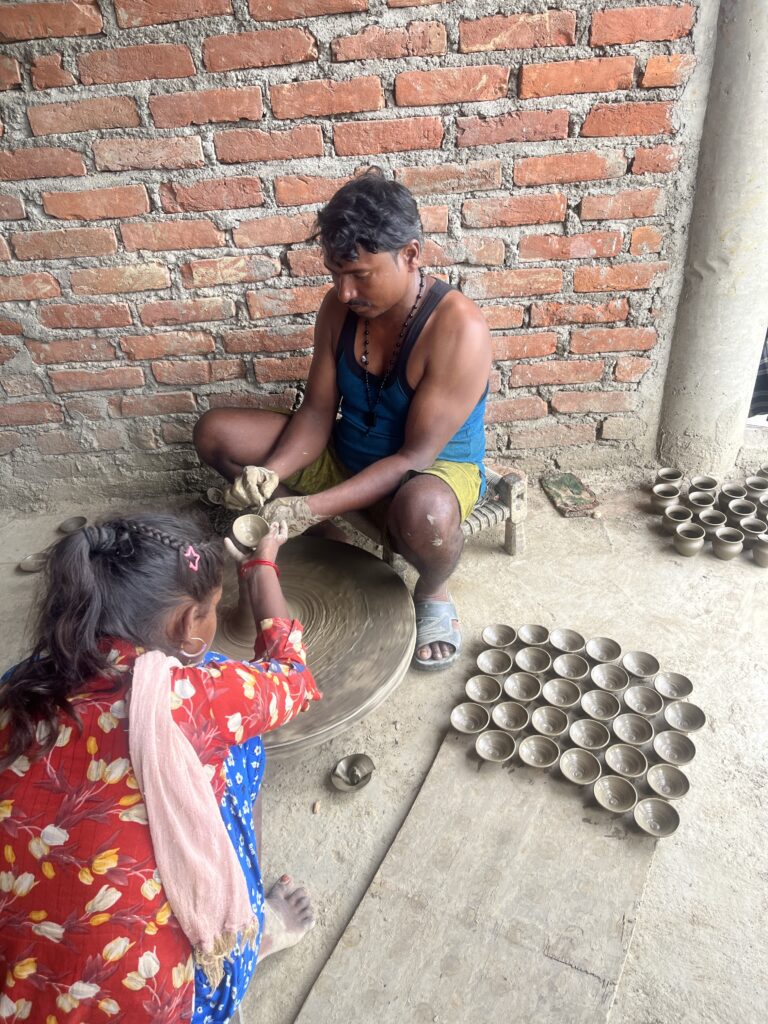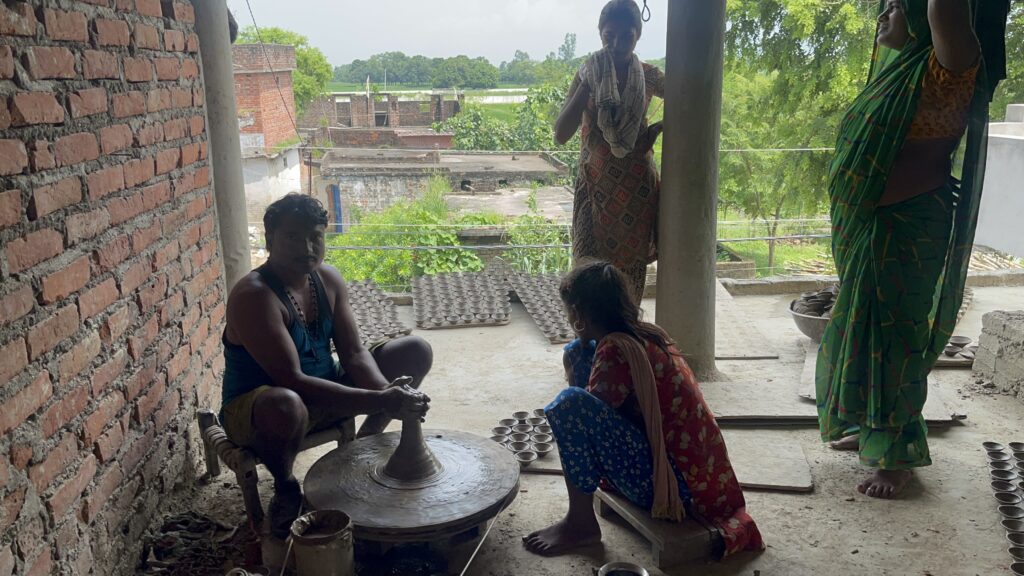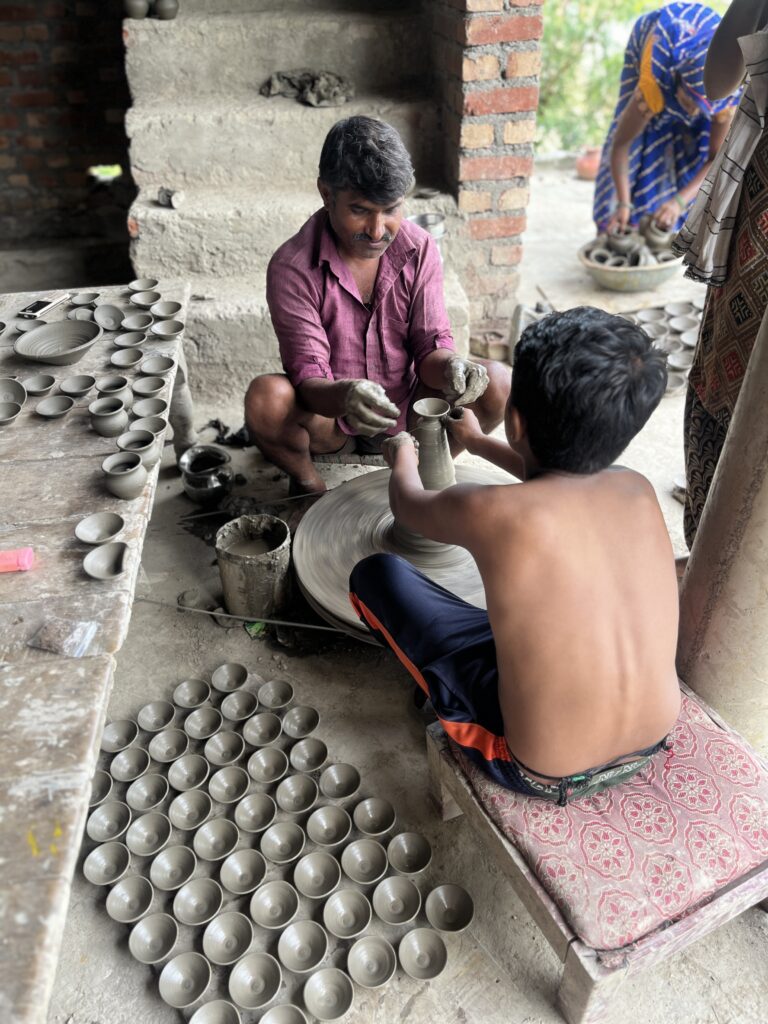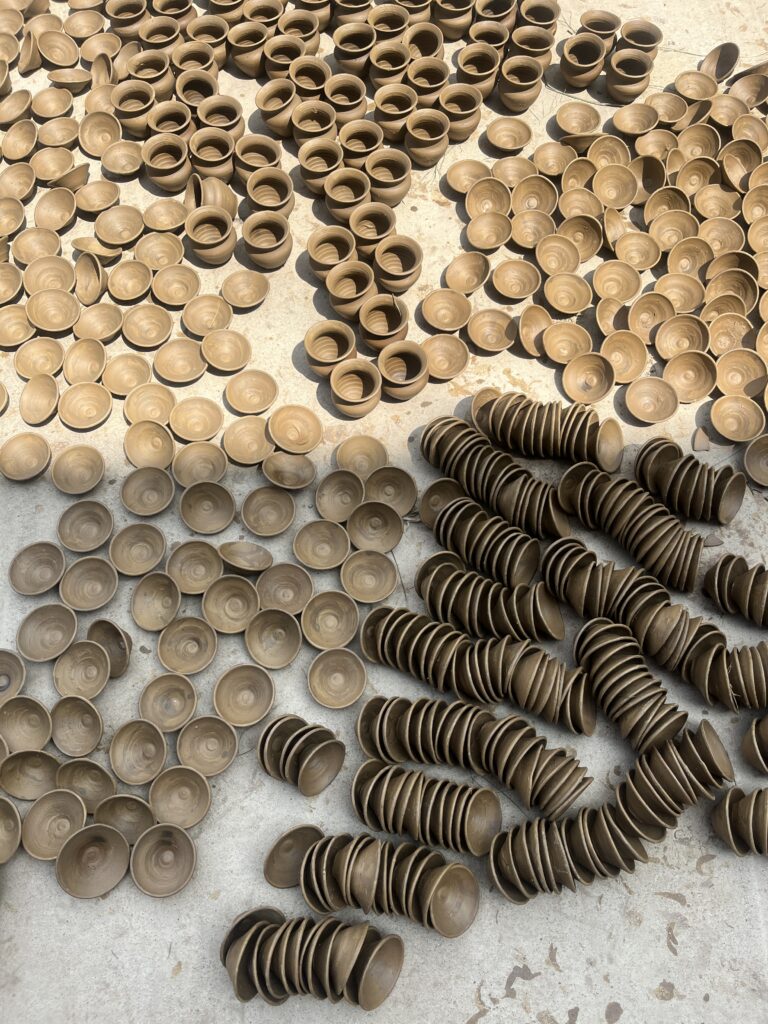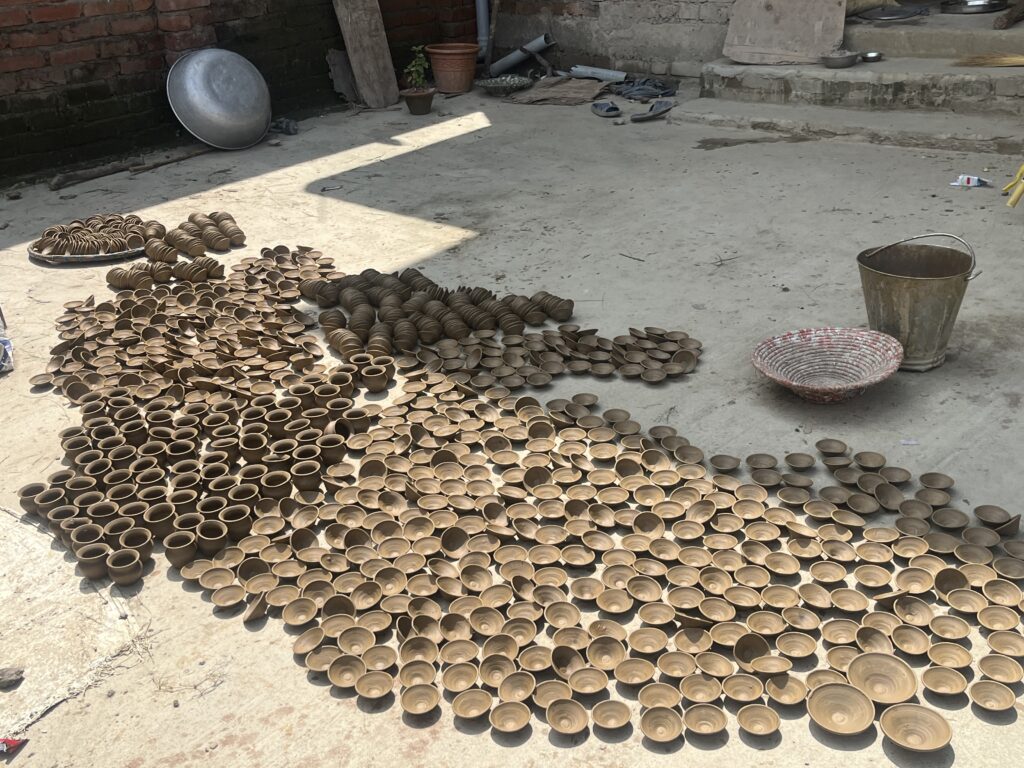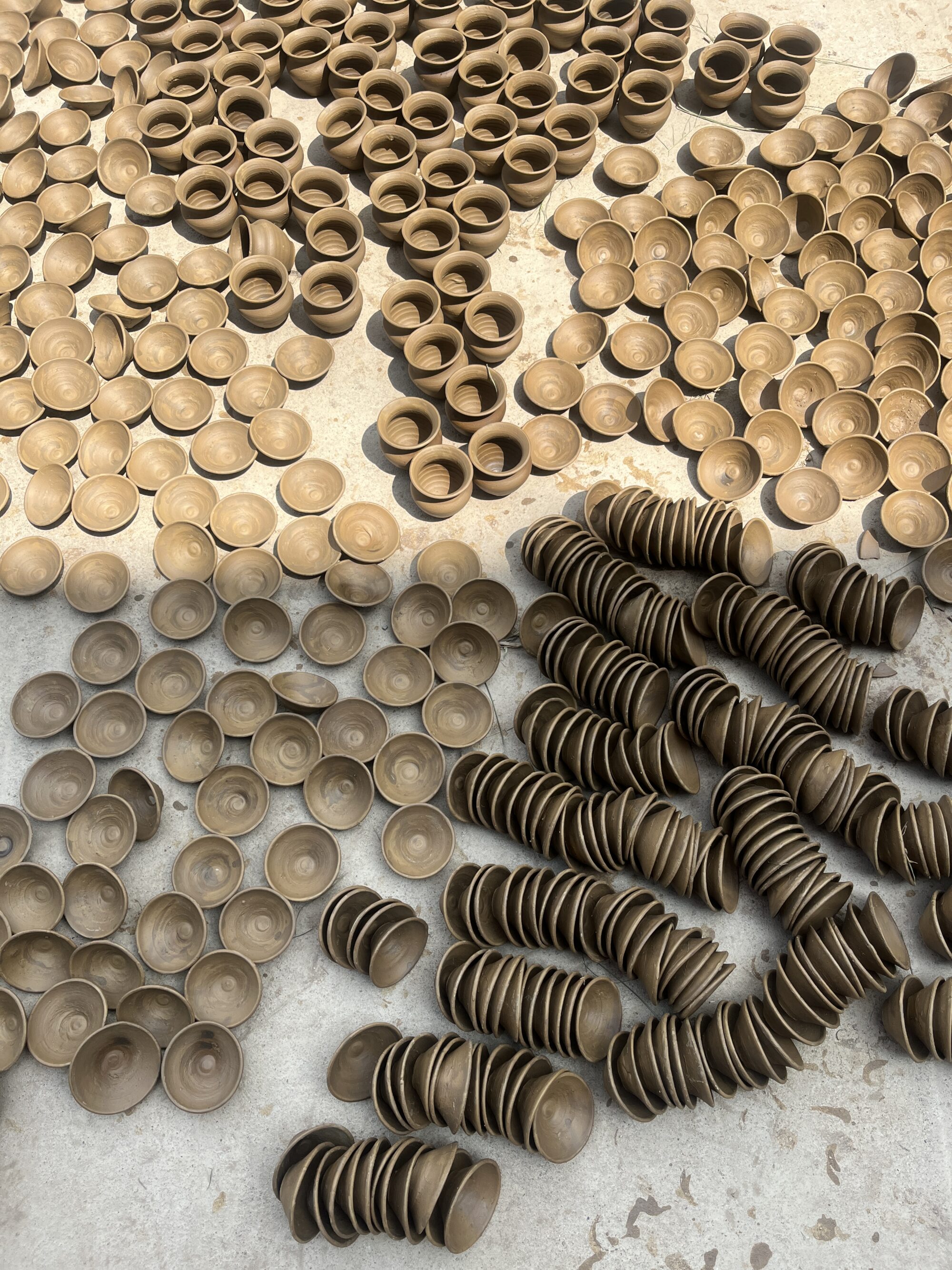The resilient people of Asu Raina village embody the spirit of striving for excellence despite their limited resources. My journey to Kapilvastu District has been deeply inspiring so far. To achieve optimal health and a balanced life, it is essential to maintain a sustained livelihood along with a healthy lifestyle.
In this small village, residents grow crops and run businesses, living in harmony with nature. They sustain their livelihoods using the resources available to them.
During my visit to Asu Raina village in Suddhodhan Rural Municipality, I was struck by several reflections. While my colleague and I were conducting data verification at a household, I noticed clay pots in the vicinity. As a photography enthusiast, I was eager to explore this further. After completing our work, I asked my colleague to accompany me to see the clay pots.
As we approached the doorway, the women inside invited us in and offered to let us create our own pottery. I was thrilled by the opportunity to create own, however, since it would provide great photo opportunities, I happily accepted the offer and my colleague was obliged to accompany me. Inside, we found women making dough for various types of pottery and two groups: a father and his son, and a father and his daughter, all engaged in shaping and drying the pots. Each pot cost only Rs. 2, and they sold these and other items in various parts of Nepal and even some regions of India. I was amazed by their sustainable livelihood and their ability to make a living from their own soil. Their genuine laughter warmed my heart.
During our data verification, we met the Yadav family, who sustain their livelihood by making “Khuwa” (a milk product) and selling it in the nearby markets of Labani and Butwal. Though their supply was limited, they generously offered me a bowl of it. It was delicious, and they noted that it was made without added sugar. My colleague and I bought half a kilo for Rs. 300.
While searching for another household, I saw women making “Dhakiya” (Handweaved basket). We saw people were genuinely happy, sharing smiles and joy. This was in stark contrast to community people within that area and in other places we work, where people often expect incentives and provisions, as well as urban areas where such positivity and contentment are often missing from daily life.

